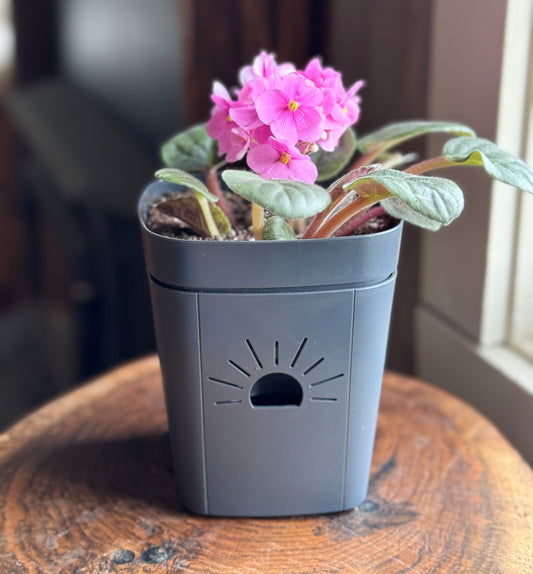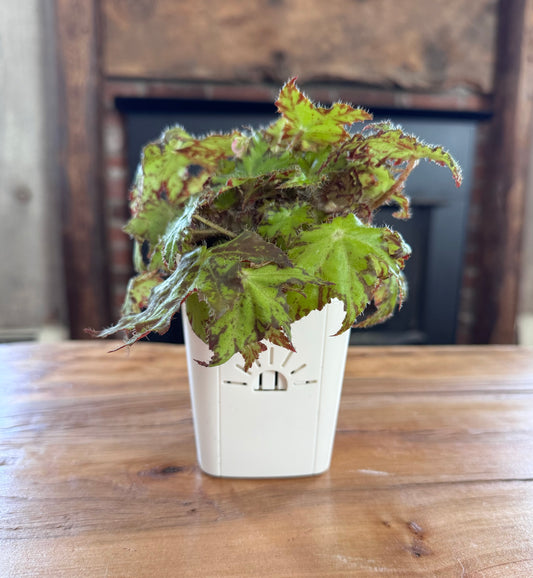The Incredible Impact of Houseplant Roots on Air Purification Several studies, including an in-depth two-year study conducted by NASA, have identified that houseplant root systems are responsible for removing the majority of pollutants from the air. The plant root-soil zone appears to be the most effective area for removing volatile organic chemicals. Therefore, maximizing air exposure to the plant root-soil area should be considered when placing plants in homes and offices for the best air filtration.
What Pollutants?
Pollutants in the home come from a variety of sources, both inside and outside. Common indoor sources include materials used for construction and furnishings, such as carpets, furniture, insulation, paints, and cleaning products. Outdoor pollutants like vehicle exhausts can be brought into the home through open windows or ventilation systems. Additionally, household activities like cooking or smoking, or burning fuel for heat can contribute to poor air quality indoors by releasing smoke particles into the air that linger long after the activity has stopped. It's important to note that even if you don't notice any visible residues or dust in your house, it does not mean that there are no pollutants present - many small particles cannot be seen with the naked eye but still have an effect on air quality.
Nitrogen Dioxide is one of the most significant contributors to indoor air pollution in homes. It is created during the combustion process with various types of appliances such as stoves, water heaters, space heaters, furnaces, boilers, and fireplaces. Devices that use fossil fuels like oil, coal, kerosene, wood, and natural gas for burning purposes all create excess N02.
Nitrogen dioxide can cause serious health issues. Short-term exposure to elevated levels of nitrogen dioxide can lead to irritation and damage to the human respiratory tract, leading to an increased risk of infection and exacerbation of asthma. Prolonged exposure over long periods of time can even lead to permanent lung damage and chronic lung disease. These effects are especially concerning for vulnerable populations such as children, elderly people, and those with existing respiratory conditions like asthma.
Plant Roots Remove Nitrogen Dioxide From the Air
A recent study has demonstrated that houseplants can be a simple and cost-effective way to enhance the air quality in homes and offices by decreasing nitrogen dioxide (NO2) levels. This pollutant, which is produced from fuel burning and associated with respiratory illness, was reduced by as much as 20 percent thanks to the use of peace lilies (Spathiphyllum wallisii), corn plants (Dracaena fragrans) and fern arums (Zamioculcas zamiifolia).
The researchers conducted the study with a variety of different plants, and all of them displayed the same capacity to reduce Nitrogen Dioxide (NO2) from the atmosphere. The test chamber had the same levels of NO2 as you would find in an office near a busy road, and after one hour, the plants were able to reduce the NO2 by half. If five plants were placed in an office that was 530 cubic feet in size and had poor ventilation, it could potentially lead to a 20% decrease in NO2.
A study conducted on nitrogen dioxide revealed that if a space of 3,500 cubic feet had the same five plants added, the pollutant would decrease by 3.5%. It was found that this effect was seen regardless of light, darkness, and dry or wet soil. Previous studies looking at carbon dioxide (CO2) removal displayed that environmental conditions had an effect on air quality.
Researchers do not think that plants are utilizing the same mechanism for NO2 as they do for CO2 absorption, which is through minuscule openings in the leaves. Even with prolonged experiments, there was no evidence of the plants releasing the NO2 back into the atmosphere. They concluded that a biological process exists involving the soil and the houseplant's roots to remove the toxins from the air. What an exciting new discovery!
Sick Building Syndrome
Sick building syndrome (SBS) is an illness caused by indoor air pollution in poorly ventilated buildings. It can cause a range of symptoms, including headaches, dry skin, eye irritation, and fatigue. The materials used to construct a building can affect the levels of indoor air pollutants; some common culprits include furniture with treated wood or plastic parts containing volatile organic compounds (VOCs), adhesives, paints and cleaners containing VOCs, carpeting treated with stain-resistant chemicals and insulation made from formaldehyde-treated fibers.
Formaldehyde is a common chemical pollutant found in many indoor environments and can have serious health effects. It is emitted from various sources, including plywood, particle board, carpeting, curtains, adhesives, and paper products. These materials are commonly found indoors, which makes formaldehyde exposure a major concern for those living or working in enclosed spaces with these items present. The presence of formaldehyde has been linked to Sick Building Syndrome (SBS), an illness that around 30 percent of office workers suffer from. The symptoms are often confused with allergies, asthma, and migraine headaches.
Plant Roots Remove Formaldehyde From the Air
This study (published by the American Society for Horticultural Science) focused on the ability of houseplants to remove formaldehyde from indoor air, a volatile organic compound (VOC) linked to health risks. Through experiments conducted in a controlled environment containing different concentrations of formaldehyde, researchers found that collectively, houseplants with exposed roots had an increased capacity for removing formaldehyde compared to plants in a deep growing medium. Previous studies have also demonstrated VOC removal by these same root-based mechanisms. The results suggest that plants can act not only as natural decorations but also as effective air filters indoors.
Both the leaves and roots of both F. japonica and F. benjamina plants were found to absorb gaseous formaldehyde from the air effectively. During the day, the plants' leaves readily metabolized formaldehyde, while the roots were the main contributors to absorption during the night when the stomata closed. This toxin removal was mostly done biologically by the roots. To maximize their potential as air purifiers, more research needs to be done on what organisms and factors influence their ability to metabolize gaseous formaldehyde.
Hundreds of Volatile Organic Compounds
It is easy to miss the potentially dangerous effects of numerous small amounts of chemicals produced by modern construction techniques, super-insulation, furniture, and technology. When all combined together in a building, they are capable of releasing hundreds of volatile organic compounds (VOCs). Even if each compound is present in low amounts, when combined, they are detrimental to people's well-being. By trying to make our buildings more energy efficient, we have inadvertently made them air-tight, and these toxic substances are unable to escape, putting the people inside at risk.
Common household sources of VOCs include hobby supplies, pesticides, stored fuels, air fresheners and candles, disinfectants, cleaners, aerosol sprays, nail polish remover, upholstery, wood preservatives, paint, solvents, automotive products, and dry-cleaned clothes. If you have office equipment at home, common VOC sources include copy machines, printers, graphic materials, carbonless copy paper, glue, permanent markers, photography solutions, and dry-erase markers.
According to the National Institute of Health, a safe level of VOCs in the home is between 0.3 to 0.5 μg/m3. The average household tested was 150 μg/m3, with an average of 56 different VOCs found per home.
Plant Roots Remove VOCs From the Air
A study conducted by NASA Scientists examined the potential of houseplants to act as an air filtration system by assessing the role of leaves, roots, soil, and associated microorganisms. The results showed that each component has a potentially significant effect on reducing indoor air pollutants such as cigarette smoke, organic solvents, and radon. The study tested benzene, trichloroethylene, and formaldehyde.
To optimize the effectiveness of pollutant removal, some of the lower leaves were removed to provide maximum exposure of the roots to the toxic chemicals in the chamber. This revealed that it is the exposed roots that are important for efficient pollutant removal. The study showed that plant roots and their associated microorganisms act as effective filters for the air, absorbing pathogenic viruses, bacteria, and organic chemicals. These pollutants are then broken down by the plant's biological processes and converted into new plant tissue. This process helps to purify the air naturally, without requiring any manual intervention or specialized equipment. In addition to this benefit of houseplants in terms of improving air quality within our homes and other indoor spaces, there is also evidence that suggests they can have a positive effect on mental health too.
Direct quote from the study: "This plant system is one of the most promising means of alleviating the sick building syndrome associated with many new, energy-efficient buildings. The plant root-soil zone appears to be the most effective area for removing volatile organic chemicals. Therefore, maximizing air exposure to the plant root-soil area should be considered when placing plants in buildings for best air filtration."





 Verified Buyer
Verified Buyer








